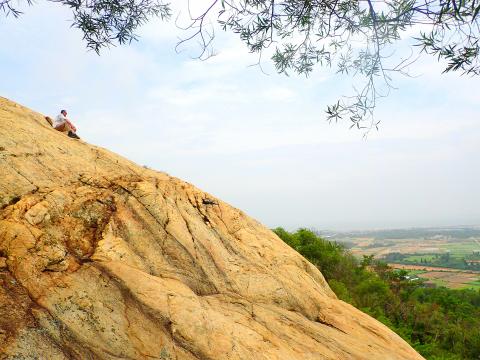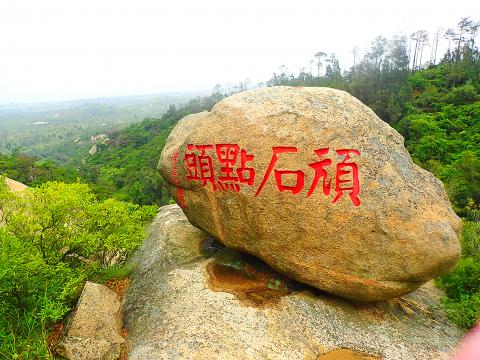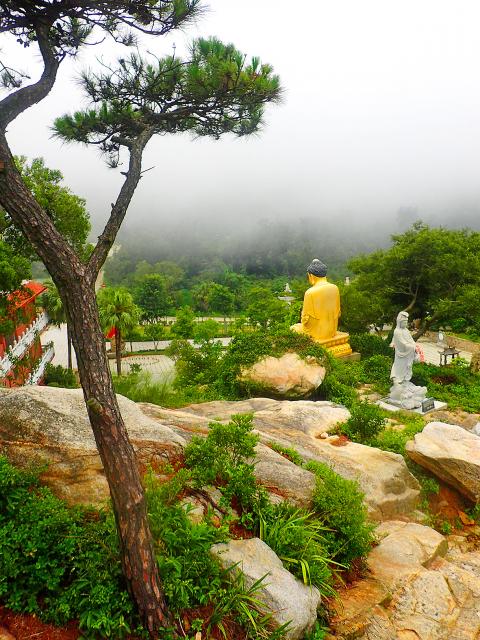Taiwan’s outlying islands are slowly emerging from their undeserved neglect. It’s true that the main islands of Penghu (澎湖) have been a popular destination for both Taiwanese and expats for a couple of decades, while tiny Siaoliouciou (小琉球) and the enchanting Green Island (綠島) have become summer favorites. But with about 100 outlying islands to chose from (of which around 30 are accessible by plane or public boat service), there are still plenty of little-known island backwaters for the curious traveler to discover.
Lying just off the Chinese coast, within clear views of Xiamen’s skyscrapers, the still heavily fortified Republic Of China-held island of Kinmen (金門) was forbidden to outsiders until it first opened to tourists in the mid 1990s. In the intervening two decades it’s become a hugely popular spot, as much for businessmen using it as a stepping stone on the “small three links” (小三通) between Taiwan and China as for tourists coming to admire its fantastic old villages and impressive military relics.
Since the opening of the small three links, Kinmen has developed at an alarming rate, and today a significant degree of the island’s old-world charm has disappeared. Some of its beautiful old Fujianese edifices have been restored to the extent that they no longer look old, while a number of the island’s unique Wind Lion God statues have also suffered the indignity of being repainted recently in gaudy colors.

Photo: Richard Saunders
Besides a rash of new residential development, at least one top-end department store on the island fully equals, in its capitalist opulence, Taipei 101’s exclusive shopping mall. Kinmen is still a great place to visit, but it’s liable to be a nasty shock to anyone that knew and loved the island in those decidedly rough-and-ready yet charming early days during the late 1990s.
The enchantment of Kinmen remains, however, in the small, protected pockets of the Kinmen National Park. By far the largest of these on the main island is its surprisingly rugged heart, the granite whale-back ridge of Taiwu Mountain (太武山; 262 meters). Although parts of the heavily militarized mountain have been open since the early days of tourism, it’s only recently that visitors have had freedom to enjoy Taiwu Mountain’s scenic splendor. This new accessibility has unexpectedly revealed it as perhaps the best place in any of Taiwan’s outlying islands for hiking.
Today visitors are allowed to climb the hill by at least four routes. The most popular by far is to follow the road starting at Kinmen Martyrs’ Shrine (金門忠烈祠) at the western end of the ridge. From here it’s 30 minutes or so up the road to Haiyin Temple (海印寺) near the summit, where most visitors turn back and return the way they came.

Photo: Richard Saunders
For a much more interesting climb, forego the road entirely and make a loop hike by following the lovely Baierjie (百二階古道), or Caicuo (蔡厝古道), old trail, then return by the shorter Doumen Old Trail (斗門古道). Both routes climb the steep, rocky northern face of the ridge.
You’ll probably need a map to find the trailheads. Baierjie Old Trail starts at the settlement of Caicuo (蔡厝). The first section, along a recently upgraded path of neat stone steps, isn’t very promising, but after passing an attractive tree-fringed pool, the trail reverts to a more natural dirt surface, and soon climbs up onto the impressive granite sheets of the hill’s northern face.
Follow the red, white or blue spots or arrows painted on rocks as the trail crosses the rock faces (admiring the panoramic views as you go), and after about 45 minutes, the trail passes the faint inscription of the ancient Yuan Dynasty Granite Stele (元碑; dating back to 1363), then plunges into a wooded glen and up the other side to join the tourist road, close to the island’s most famous piece of Chinese Nationalist Party propaganda: the Wu Wang Zai Jyu (毋忘在莒) inscription, carved into the rock on the command of Chiang Kai-shek (蔣介石) in 1952.

Photo: Richard Saunders
BUDDHIST TEMPLE
Walk back downhill along the road, and in a minute or two there’s the Buddhist Haiyin Temple (海印寺). It seems to have had a facelift recently, and is now a very handsome sight, surrounded by neatly manicured grounds and spiritual statues artfully dotted among the rock outcrops. There are toilets nearby, and a useful water fountain for topping up your water bottle.
Beside the temple the road descends eastwards towards Yangcai (陽翟). Although few people walk this half of the road, it’s far more scenic than the western section. The best bit is the first 20 minutes, first descending through a beautiful valley skirted with strange and beautiful rock formations, then lying high above a beautiful small lake nestling in the woods below.
After the lake one of several curious and rather impressive balancing boulders stands beside the road, at the brink of a rocky precipice. A couple of meters further, fork right onto the short but scenic Sunrise Viewing Trail (觀日步道), cut into the impressive, bare granite face of the hill. Near the end it passes beneath another huge boulder, which looks as though it might roll down the mountainside at any moment.
Retrace steps back up the road, past Haiyin Temple and the Wu Wang Zai Jyu inscription, then turn right up a short path to one of the finest viewpoints on Taiwu Mountain, the Reflection Tower (倒影塔). Beside it is the upper trailhead of the Doumen Old Trail, an attractive dirt path which makes for an easy but scenic descent. It emerges on a road about 1.5 kilometers west of Caicuo village, and an easy 20 minute walk back to your bike or car.
Richard Saunders is a classical pianist and writer who has lived in Taiwan since 1993. He’s the founder of a local hiking group, Taipei Hikers, and is the author of six books about Taiwan, including Taiwan 101 and Taipei Escapes. Visit his Web site at www.taiwanoffthebeatentrack.com

This month the government ordered a one-year block of Xiaohongshu (小紅書) or Rednote, a Chinese social media platform with more than 3 million users in Taiwan. The government pointed to widespread fraud activity on the platform, along with cybersecurity failures. Officials said that they had reached out to the company and asked it to change. However, they received no response. The pro-China parties, the Chinese Nationalist Party (KMT) and Taiwan People’s Party (TPP), immediately swung into action, denouncing the ban as an attack on free speech. This “free speech” claim was then echoed by the People’s Republic of China (PRC),

Exceptions to the rule are sometimes revealing. For a brief few years, there was an emerging ideological split between the Democratic Progressive Party (DPP) and Chinese Nationalist Party (KMT) that appeared to be pushing the DPP in a direction that would be considered more liberal, and the KMT more conservative. In the previous column, “The KMT-DPP’s bureaucrat-led developmental state” (Dec. 11, page 12), we examined how Taiwan’s democratic system developed, and how both the two main parties largely accepted a similar consensus on how Taiwan should be run domestically and did not split along the left-right lines more familiar in

Specialty sandwiches loaded with the contents of an entire charcuterie board, overflowing with sauces, creams and all manner of creative add-ons, is perhaps one of the biggest global food trends of this year. From London to New York, lines form down the block for mortadella, burrata, pistachio and more stuffed between slices of fresh sourdough, rye or focaccia. To try the trend in Taipei, Munchies Mafia is for sure the spot — could this be the best sandwich in town? Carlos from Spain and Sergio from Mexico opened this spot just seven months ago. The two met working in the

Many people in Taiwan first learned about universal basic income (UBI) — the idea that the government should provide regular, no-strings-attached payments to each citizen — in 2019. While seeking the Democratic nomination for the 2020 US presidential election, Andrew Yang, a politician of Taiwanese descent, said that, if elected, he’d institute a UBI of US$1,000 per month to “get the economic boot off of people’s throats, allowing them to lift their heads up, breathe, and get excited for the future.” His campaign petered out, but the concept of UBI hasn’t gone away. Throughout the industrialized world, there are fears that